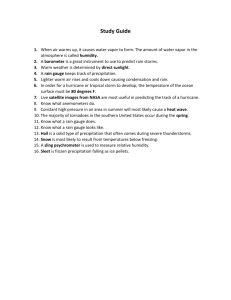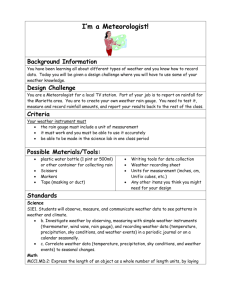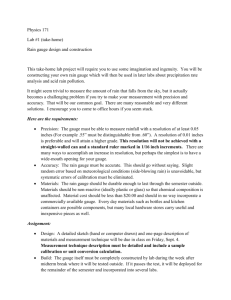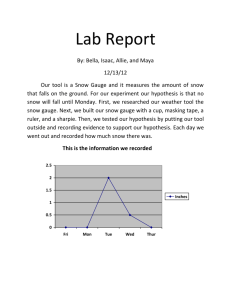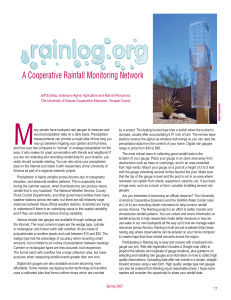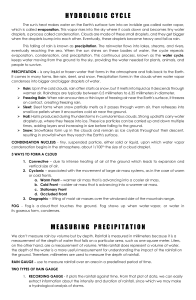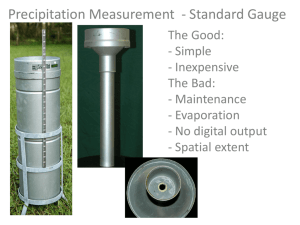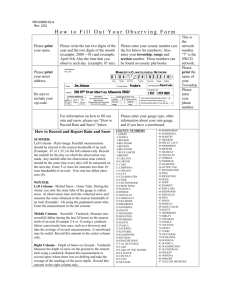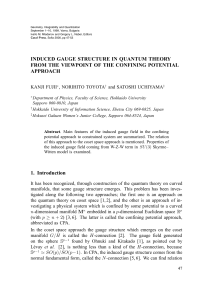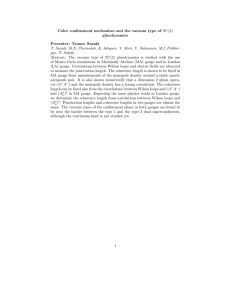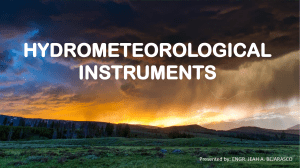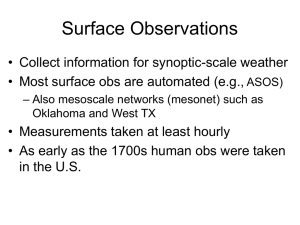Precipitation Measurement
advertisement
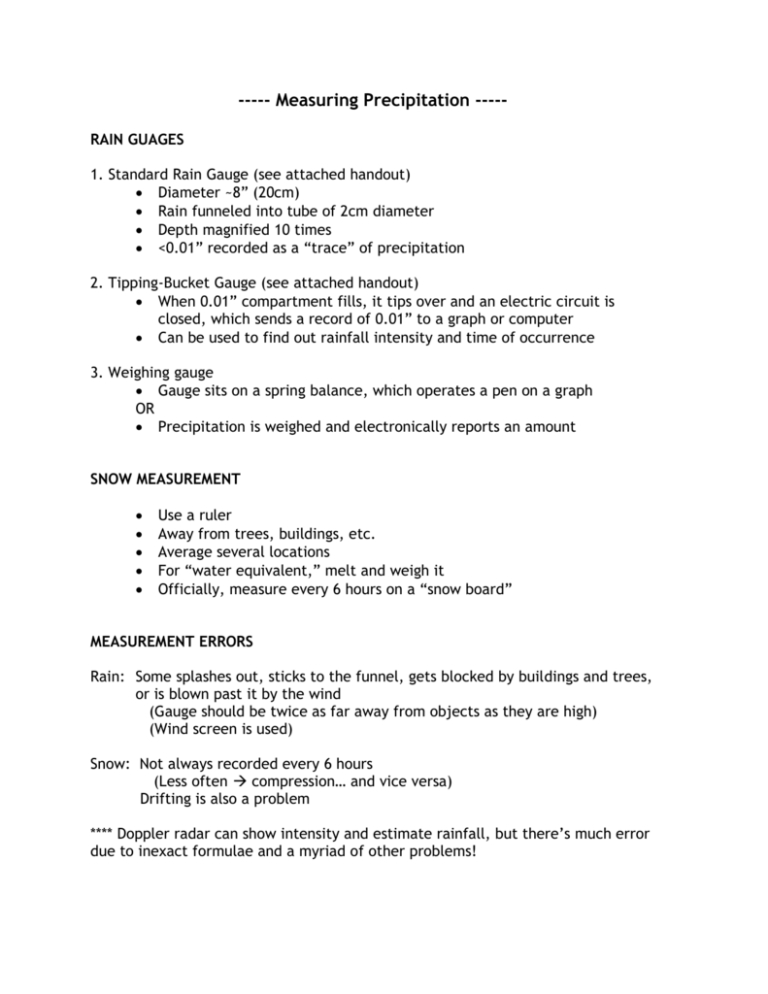
----- Measuring Precipitation ----RAIN GUAGES 1. Standard Rain Gauge (see attached handout) Diameter ~8” (20cm) Rain funneled into tube of 2cm diameter Depth magnified 10 times <0.01” recorded as a “trace” of precipitation 2. Tipping-Bucket Gauge (see attached handout) When 0.01” compartment fills, it tips over and an electric circuit is closed, which sends a record of 0.01” to a graph or computer Can be used to find out rainfall intensity and time of occurrence 3. Weighing gauge Gauge sits on a spring balance, which operates a pen on a graph OR Precipitation is weighed and electronically reports an amount SNOW MEASUREMENT Use a ruler Away from trees, buildings, etc. Average several locations For “water equivalent,” melt and weigh it Officially, measure every 6 hours on a “snow board” MEASUREMENT ERRORS Rain: Some splashes out, sticks to the funnel, gets blocked by buildings and trees, or is blown past it by the wind (Gauge should be twice as far away from objects as they are high) (Wind screen is used) Snow: Not always recorded every 6 hours (Less often compression… and vice versa) Drifting is also a problem **** Doppler radar can show intensity and estimate rainfall, but there’s much error due to inexact formulae and a myriad of other problems!
